Endpoints are infrastructure sources that are consumed by vCloud Automation Center.
vRealize Automation supports following endpoints:
- vCenter
- vCloud Director
- Hyper-v, Citrix Xen server,
- Physical servers like HP,DELL and Cisco
- cloud platforms like Openstack, Amazon Web Services (AWS) etc.
Physical Endpoints
A physical endpoint represents one physical machine or a pool of multiple physical machines. To make a physical machine available for provisioning, you must create an endpoint to represent it. Information about each known physical machine, such as its installed memory and CPU count, is collected regularly through its management interface.
vRealize Automation communicates with physical machines through the following types of physical endpoints, which represent the management interfaces through which it communicates.
- Cisco UCS Manager
- Dell iDRAC
- HP iLO
Note: iDRAC and iLO endpoints represent single standalone machines. Cisco UCS Manager endpoints represent pools of multiple machines.
vRealize Automation make use of DEMs or agents to communicate with and manage endpoints. To create and manage Endpoints we need Infrastructure Administrator role.
In this post we will be focusing on adding a vCenter Endpoint to vRA.
Create a vCenter Endpoint
IaaS administrators create endpoints that allow vRealize Automation to communicate with the vSphere environment and discover compute resources, collect data, and provision machines.
Prerequisites
1: Log in to the vRealize Automation console as an Infrastructure administrator.
2: The endpoint name you configure in vRealize Automation must match the endpoint name provided to the vSphere proxy agent during installation.
3: Valid License Key applied to vRA IaaS
If you have missed earlier posts of this series then I would recommend reading them first before going ahead. You can access the earlier posts from below links:
2: Installing and Configuring vRA Identity Appliance
3: Installing and Configuring vRA Appliance
4: Installing and configuring IaaS Components
In this post we will learn how to add vSphere Endpoint. Lets begin
In my post Installing and configuring IaaS Components I used the name vCenter as vSphere Agent name and Endpoint name. I will use the same name while adding my vCenter Endpoint.
Login to vRA Iaas Console by typing the URL https://vRA FQDN/vcac and login with infrastructure admin credential.
In my lab I have created a user vrainf-adm for the same purpose and I will be logging to IaaS console with that user.
At this point if you don’t have a license key, you’re probably in trouble.
We need to add a valid license key by going to the infrastructure tab –> Administration –> Licensing.
Enter your license key so you can continue with your endpoints.
Adding Credentials
You’ll need to enter some login information so that you can connect to your endpoints. These credentials will be saved for future use.
Go to the Infrastructure Tab –> Endpoints –> Credentials.
Add a new set of credentials by clicking the “+” sign and fill out the information.
A good description and a name are always recommended. Then enter your a vCenter username and password so you can add the vCenter resources in a future step.
You can use SSO admin password here but it is recommended to use a dedicated service account with administrator privileges.
Note: After filling up the details be sure to click the green check mark on the left side to save them.
Create Endpoints
Click the “New Endpoint” dropdown and go to Virtual –> vSphere (vCenter) option.
1. Type the same name which is specified as Endpoint during Agent installation. vCenter in my case
2. Enter the description for this endpoint.
3. Type in the address of your vCenter. This should be something like https://vcenter.name/sdk
4. Select the credentials which you have configured in the previous step to use as credentials to authenticate this endpoint. In my case I created vCenter Cloud.
5. You can Choose Select the checkbox “Specify manager for network and security platform” , if you have NSX or vCloud Networking and Security.
6. Click OK to create the endpoint.
Your vCenter Endpoint is created and will be visible under Endpoints
We have completed configuring credentials and vCenter endpoint here.
In Next post of this series we will look into:
Creating and Configuring Fabric Groups
Creating Business Groups and Reservations
Creating and Publishing Blueprints
Deploying a new VM from Self-Service Portal
Share this post on social media if the above post is informational to you. Be sociable 🙂

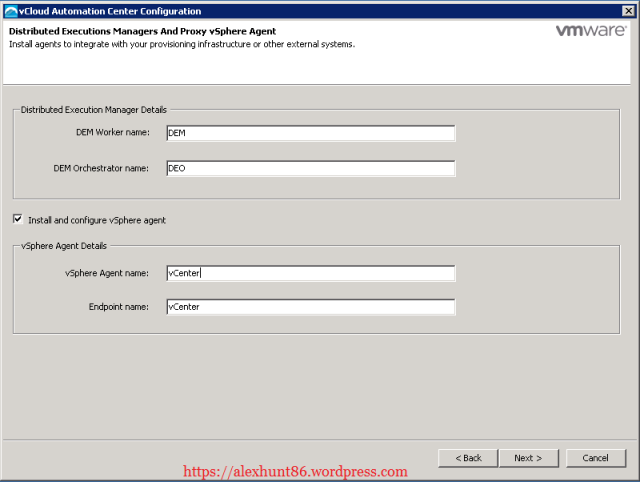
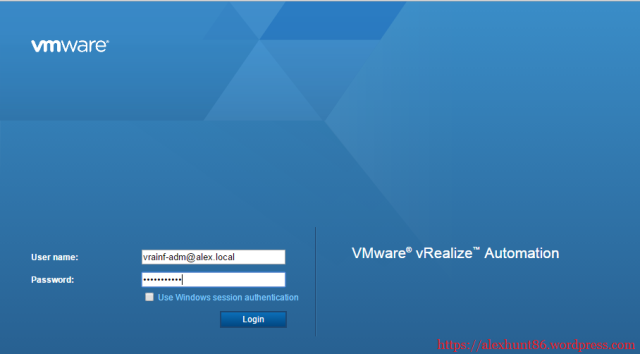
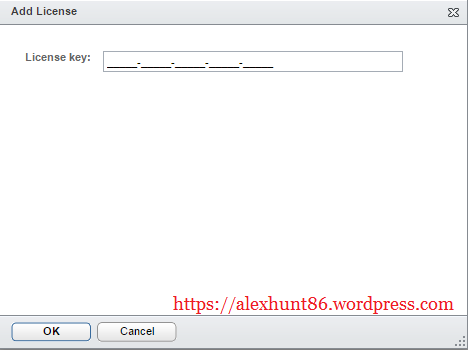
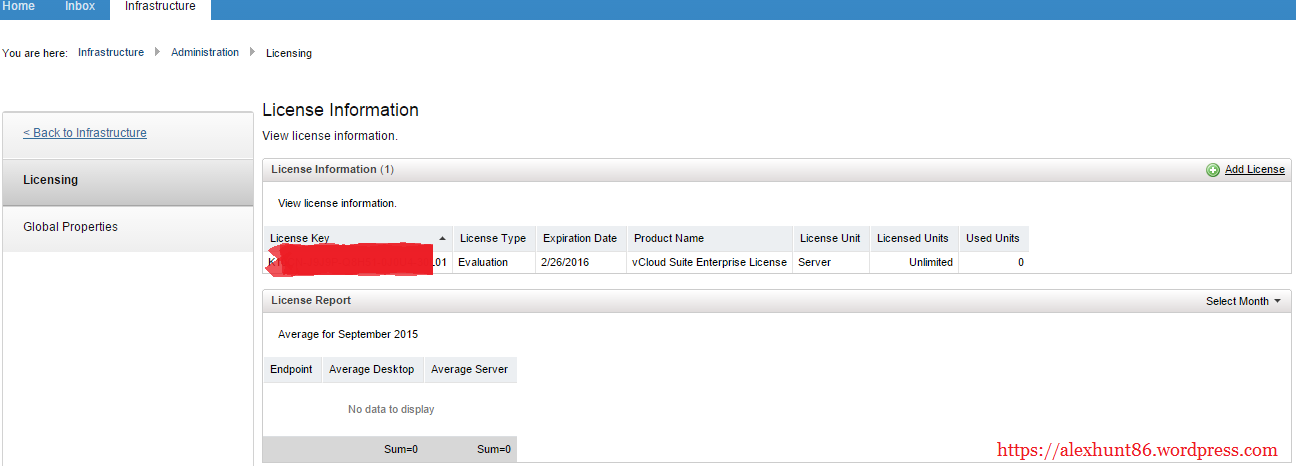



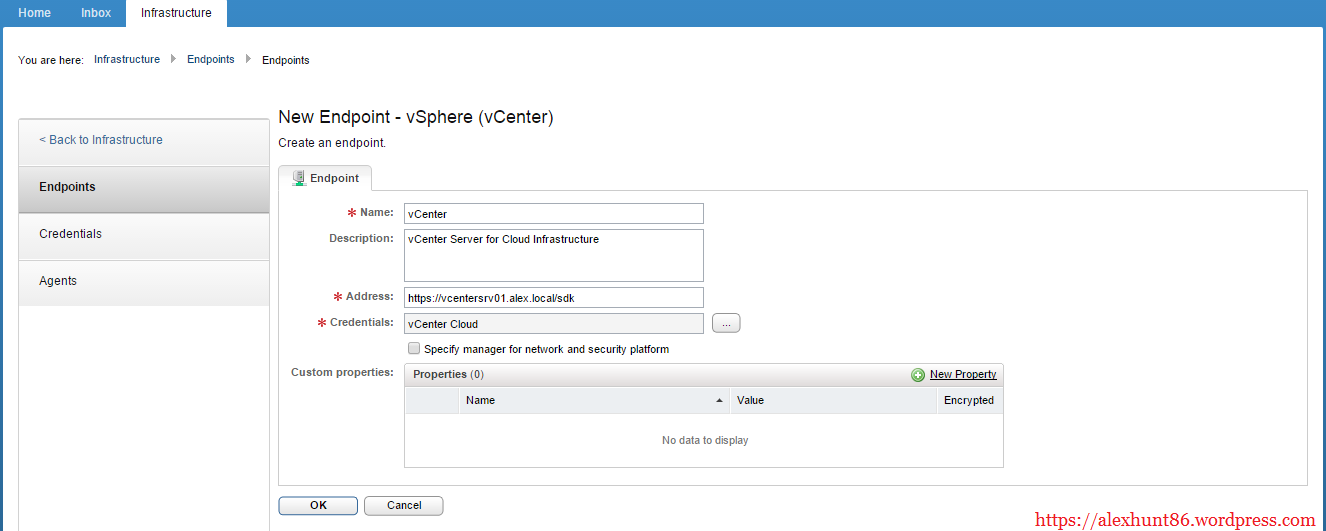

13 thoughts on “vRealize Automation-Configuring vSphere Endpoint”